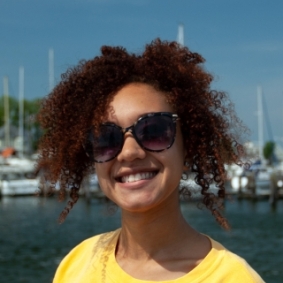Eight students will be presenting the summer work at the Ocean Sciences Meeting in March 2022!
Nina Woodard, Andrews University
Class Year:
2019Mentor:
Matt Gray Ph.D. William Nardin, Ph.D.Project Title:
Greening the Grey: Integrating Oysters with Grey Infrastructure to Enhance Shoreline ProtectionAbstract:
Due to global climate change, Talbot and Dorchester County on the Chesapeake Bay are experiencing some of the fastest rates of sea-level rise (SLR) in the country. Historically, communities have used grey engineering to protect their shorelines from erosion and storms, such as breakwaters, seawalls, or rip-rap. However, over time, these will lose effectiveness without major upgrades. Additionally, these structures provide poor habitat for aquatic species. This project seeks to create effective hybrid coastal infrastructure by retrofitting grey infrastructure with oysters using oyster castles. Oysters are ecosystem engineers, offering both protective and non-protective benefits to coastal communities. This study focused on filling a knowledge gap and building the foundation of a long-term BACI-designed ecosystem project, to measure the impact of installing oyster castles. We constructed model-informed oyster castle breakwaters at Horn Point Laboratory with the aim of comparing both the protective and non-protective benefits of seeded and unseeded breakwaters by monitoring wave dampening effects, shoreline response, biodiversity, and oyster growth and accretion. Focusing mainly on the ‘before’ part of the BACI design, we took the first steps necessary in understanding the use of oyster castles in Maryland, building a foundation of knowledge.
Location:
Horn Point LaboratoryREU Update
Habitat Resilience Specialist with Program for Local Adaptation to Climate Effects: Sea Level Rise (NOAA)Presentations:
Woodard, N.*, M. Gray, and W. Nardin. 2020. Greening the Grey: Integrating Oysters to Enhance Grey Infrastructure Effectiveness Against Sea Level Rise. Ocean Sciences Meeting, San Diego, CA.



